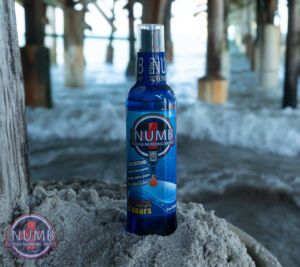Are you thinking about getting a tattoo, but are worried about the pain it might involve? You’re not alone! Many people wonder what to expect when inking their skin for the first time. Fortunately, with enough research and preparation you can learn how to mentally prepare for your tattoo experience, as well as get advice on how best to manage any discomfort that comes along with it. Everything you need to know about tattoos and their associated pain level including: reasons why tattoos hurt, tips for minimizing pain during application and aftercare advice!

Understanding Pain Levels
Getting a tattoo is a unique experience that requires a certain level of dedication. However, understanding pain levels is crucial in ensuring that this experience doesn’t become a terrible one. So, what can you expect when getting a tattoo? The truth is, it varies from person to person. Pain levels depend on a variety of factors, such as your individual pain tolerance, where on your body you get inked, and the size of the tattoo. Nevertheless, there are some general guidelines that can help you prepare.
For example, areas of the body with more nerve endings, such as the ribs, may be more painful to tattoo than areas with fewer nerve endings, like the outer thigh. Additionally, larger tattoos will generally take more time, which means you’ll have to deal with the pain for longer. Understanding these variables can help you better prepare physically and mentally for this exciting, memorable experience.
Pain Myths Busted
There are many misconceptions revolving around the pain associated with getting a tattoo. Some people believe that tattoo pain is unbearable and ranks at the highest level on any pain scale, but this is far from true. The sensation of getting a tattoo is often described as a continuous scratch or a pinprick. Another myth is the notion that drinking alcohol or taking painkillers prior to the session will numb the pain. In reality, these substances can thin the blood, potentially causing more bleeding during the process and complicating the healing time post-tattoo.
It’s important that you approach your tattooing experience with a clear mind and realistic expectations about the discomfort involved. Proper research, mental preparation and following the advice of your professional tattoo artist can make your entire tattoo journey more comfortable and stress-free.
Tips To Reduce Discomfort
Preparing for pain can be a daunting prospect, but there are many effective ways to reduce discomfort. Make sure you are well-rested and hydrated in the days leading up to your tattoo appointment. Utilizing relaxation techniques, such as deep breathing, guided imagery, and progressive muscle relaxation, can help calm your mind and body during times of pain. Distraction techniques, such as listening to music or engaging in a conversation with someone, can also be helpful. Make sure to communicate with your tattoo artist about any concerns you have regarding pain management. With the right preparation and techniques, the experience of pain can be lessened, making for a more comfortable experience.
Different Parts of the Body & Their Level of Sensitivity
Our bodies are complex machines with each part playing a unique role. When it comes to sensitivity, some parts of our body are more sensitive than others. For instance, our fingertips, lips, and genitals are highly sensitive compared to our elbows, knees, and ankles. This is because there are more nerve endings in these areas, allowing us to feel different sensations more intensely. The sensitivity of different body parts can vary from person to person, and even change over time. Understanding which parts of our body are more sensitive can help us better appreciate and care for ourselves as well as prepare when picking a placement for our tattoos.

Avoiding Potential Risks and Complications
Getting a tattoo is an exciting experience, but it’s important to carefully consider the potential risks and complications that can arise from this decision. Before booking an appointment, it’s crucial to do your research and choose a reputable artist and studio. Additionally, it’s important to follow all aftercare instructions provided by your artist in order to avoid infections or other issues. Taking these extra precautions can greatly reduce the likelihood of any problems and ensure that your tattoo heals properly. Remember, a little extra care before and after getting inked can go a long way in keeping you and your body safe.
Editing Your Design or Placement
One important aspect to consider when getting a tattoo is reducing pain during the process. This can be achieved through editing your design or placement. For example, opting for a smaller size or choosing a location with less nerve endings can make a significant difference in the amount of pain felt during the tattooing process. Additionally, communicating with your tattoo artist about any concerns or discomfort can help them adjust their technique or make accommodations to ensure a more comfortable experience.
Some people use a numbing cream beforehand to help with lower pain tolerances. Remember, the process of getting a tattoo should not be painful to the point of extreme discomfort. By taking steps to reduce pain and discomfort, you can enjoy the tattooing process and the final result.
Pro Numb Tattoo Spray
Reef Side Tattoo proudly presents its very own numbing product, Pro Numb Tattoo Spray. Designed with our clients’ comfort in mind, this innovative spray delivers up to five hours of numbing effect, significantly reducing the overall discomfort associated with tattooing. But that’s not all. The Pro Numb Tattooing Spray also offers the added benefits of minimizing swelling and bleeding . These are two common concerns during the tattooing process. This powerful, long-lasting numbing spray is a testament to our commitment to ensuring a more enjoyable and less painful tattooing experience for our clients.

Aftercare
When it comes to aftercare, there are plenty of options available to help alleviate symptoms and promote healing. Home remedies and over-the-counter medication can both be effective in managing discomfort and aiding the recovery process. For minor aches and pains, a warm compress or soak in Epsom salt can help ease muscle soreness. Over-the-counter pain relievers, such as ibuprofen or acetaminophen, can also be helpful in managing pain and reducing inflammation. Natural remedies like ginger or peppermint tea can aid in digestion and soothe upset stomachs. It’s important to always follow instructions and consult with a healthcare professional before starting any new treatment.
Pain levels associated with getting a tattoo can vary based on factors such as the size and design of the tattoo, your personal pain tolerance, and where the tattoo is placed. It’s important to adequately prepare for a tattoo if you want to reduce any discomfort or risk associated with it, such as taking a deep breath during longer needle passes and applying ice after. Areas on the body that are further away from the heart tend to be more sensitive than areas closer towards it.
You can also edit a design or placement to reduce pain, but remember that depending on how complex it is you may require multiple sessions. Make sure to pay close attention to aftercare instructions when you receive your new ink, such as avoiding direct sunlight and sticking to home remedies such as aloe vera or over-the-counter pain medications like ibuprofen. Reefside Tattoo in Melbourne, FL can help make your tattoo experience a good one! With preparation, good techniques and information regarding what level of pain you should expect beforehand, you should have no problem getting through your new tattoo.
